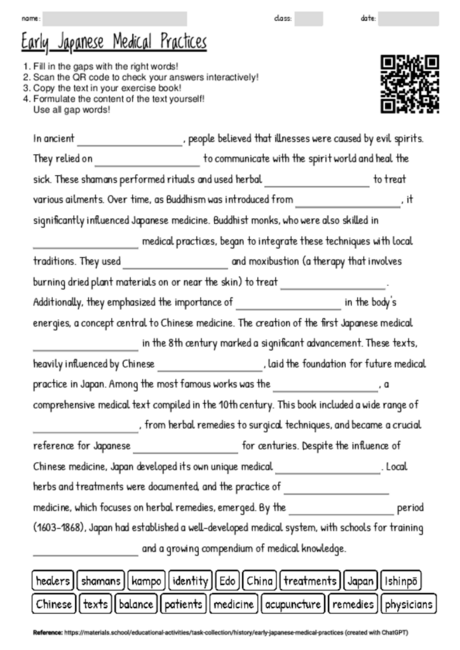Early Japanese Medical Practices
Cloze texts, like the one created on ancient Japanese medicine, serve as versatile tools in various teaching and learning phases. They can be particularly engaging for students in the age group of 12 to 16, as they encourage active participation and critical thinking. This approach requires students to use their knowledge and context clues from the text to fill in the blanks, thereby enhancing comprehension and retention of the subject matter. The selected text provides an accessible entry point into the complex history of early Japanese medical practices, blending cultural, religious, and scientific perspectives. The integration of elements such as shamans, Buddhism, and the transition to a more systematic approach to medicine reflects the multifaceted nature of historical developments. Using cloze texts in the classroom can foster a deeper understanding of how ancient civilizations approached healthcare, the influence of cultural exchange, and the evolution of medical knowledge. Moreover, it highlights the importance of textual evidence in understanding historical contexts, encouraging students to pay attention to details. This method also promotes a more interactive learning environment, where students can discuss their choices and reasoning, facilitating collaborative learning. The text about ancient Japanese medicine, with its focus on the transition from spiritual to more empirical practices, serves as an excellent case study for discussing the broader themes of tradition, innovation, and the synthesis of different cultural influences in the development of medical science.

